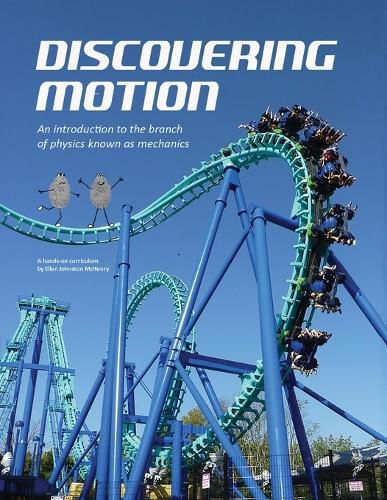Readings Newsletter
Become a Readings Member to make your shopping experience even easier.
Sign in or sign up for free!
You’re not far away from qualifying for FREE standard shipping within Australia
You’ve qualified for FREE standard shipping within Australia
The cart is loading…






This title is printed to order. This book may have been self-published. If so, we cannot guarantee the quality of the content. In the main most books will have gone through the editing process however some may not. We therefore suggest that you be aware of this before ordering this book. If in doubt check either the author or publisher’s details as we are unable to accept any returns unless they are faulty. Please contact us if you have any questions.
This is a hands-on introduction to the branch of physics known as mechanics. Experiments and activities are embedded into the text, so that students discover for themselves the scientific principles they are reading about. The text is lively and often humorous and has cartoon characters who take the reader to meet the famous scientists who are credited with making these discoveries. Very few specialized tools or materials are required. Most of the supplies are items commonly found in most homes, or easily purchased at a local store. Topics include center of mass, simple machines, mechanical advantage, types of levers, pendulums, resonance, oscillation, inertia, mass, weight, newtons, static and kinetic friction, free body diagrams, gravity, velocity, acceleration, terminal velocity, big G, relativity explanation of gravity, Newton's three laws, momentum, impulse, collisions, Cartesian grid, graphing motion, parabolic motion, uniform circular motion, cycloids, centripetal force, angular momentum, moment of inertia, kinetic and potential energy, and work. About a dozen equations are introduced, but they require nothing more than pre-algebra level math (examples: d=1/2gt2, L=mvr, PE=mgh, KE=1/2mv2) The scientists included are Archimedes, Aristotle, Galileo, Da Vinci, Newton, Cavendish, Descartes, Foucault, Einstein, and Marey, with mentions of Euclid, LaPlace, Stokes, Maxwell, and Blackburn.
$9.00 standard shipping within Australia
FREE standard shipping within Australia for orders over $100.00
Express & International shipping calculated at checkout
This title is printed to order. This book may have been self-published. If so, we cannot guarantee the quality of the content. In the main most books will have gone through the editing process however some may not. We therefore suggest that you be aware of this before ordering this book. If in doubt check either the author or publisher’s details as we are unable to accept any returns unless they are faulty. Please contact us if you have any questions.
This is a hands-on introduction to the branch of physics known as mechanics. Experiments and activities are embedded into the text, so that students discover for themselves the scientific principles they are reading about. The text is lively and often humorous and has cartoon characters who take the reader to meet the famous scientists who are credited with making these discoveries. Very few specialized tools or materials are required. Most of the supplies are items commonly found in most homes, or easily purchased at a local store. Topics include center of mass, simple machines, mechanical advantage, types of levers, pendulums, resonance, oscillation, inertia, mass, weight, newtons, static and kinetic friction, free body diagrams, gravity, velocity, acceleration, terminal velocity, big G, relativity explanation of gravity, Newton's three laws, momentum, impulse, collisions, Cartesian grid, graphing motion, parabolic motion, uniform circular motion, cycloids, centripetal force, angular momentum, moment of inertia, kinetic and potential energy, and work. About a dozen equations are introduced, but they require nothing more than pre-algebra level math (examples: d=1/2gt2, L=mvr, PE=mgh, KE=1/2mv2) The scientists included are Archimedes, Aristotle, Galileo, Da Vinci, Newton, Cavendish, Descartes, Foucault, Einstein, and Marey, with mentions of Euclid, LaPlace, Stokes, Maxwell, and Blackburn.